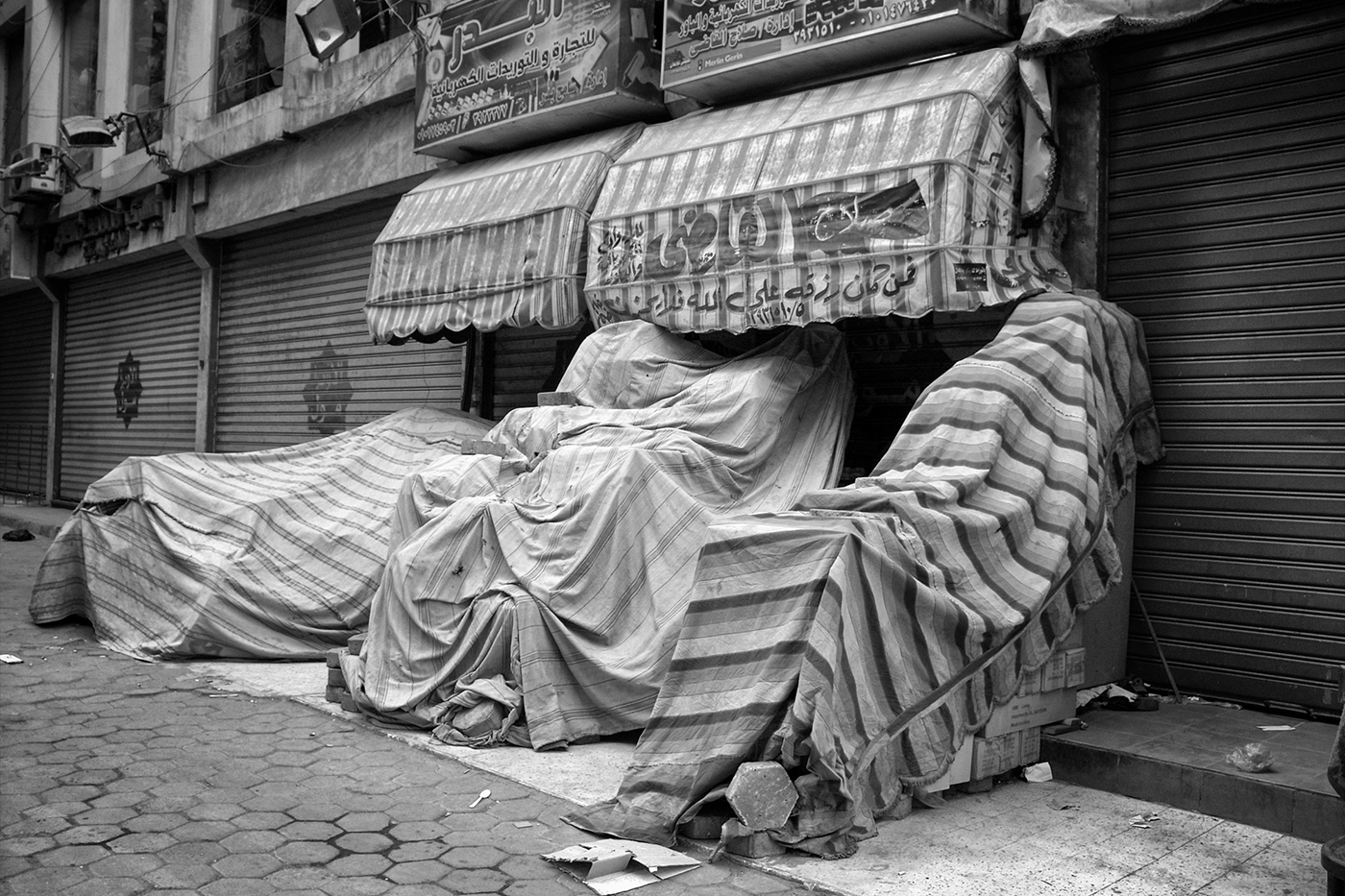Arab-Swiss cultural exchange goes digital

It’s taken nearly a whole year of planning, but a new website by the Cairo branch of the Swiss Arts Council, Pro Helvetia, has started promoting cultural interaction between Egypt and Switzerland.
A demonstration takes place in the middle of the night – but the protestors exude a magical aura in an otherwise ordinary world: dummy-like, yet alive, they chant political slogans in different languages until the camera shakes and darkness falls on the screen.
The scene comes from a videoExternal link, “On stage”, by collectif_fact, Swiss artists Annelore Schneider and Claude Piguet. One of the early projects to appear on the new website, the idea came from the recent revolutionary activity that took place in the Arab world.
A number of projects were chosen by Swiss art historian Markus Stegmann and Egyptian artist Hamdi Attia to begin the online cultural exchange between the two nations.
Under the theme of ‘intersections’, the pair’s pick of artistic contributions representing different aspects of their cultures will stay on the websiteExternal link, which went live at the start of August, until December.
The basic idea is to look at public sphere issues from a perspective that moves beyond the physical space, such as a street, square or town, and into the domain of people’s interactions.
A range of works
The project has resulted in critical and innovative creations by Swiss and Egyptian writers and visual artists.
Artists Karin Wälchli and Guido Reichlin, who have been working together since 1995 and live in Zurich, have contributed a series of photographs titled “Chalet 5”.
The photos, symbolically in black & white, depict scenes which can be found anywhere in any city in the world: on a street, in a market or at a café.
One of three Egyptian projects is by Huda Lutfi. She presents a visual, conceptual piece of research on the issue of gender and its representation in the graffiti of the revolution.
Using a collection of street art pictures, Lufti analyses how the phrases and drawings depict the relationship between men and women. She concentrates on a concept of the masculine way of thinking, the image of women in popular culture and existing cultural biases.
In terms of writing, the Swiss side presents two texts. The first, by Rachel Mader, is about art and the public sphere. The second, by Brita Polzer, covers the differences in traditions between urban and rural living and the recent changes in rural life, namely its gradual adoption of urban morals.
The Egyptian side presents a number of research papers. One of them, by Wael Ashri, traces the development of graffiti in Cairo from 2011 to 2014, taking in how it was perceived by people and institutions.
From in person to online
Until recently, cultural interaction between Switzerland and Egypt, through Pro Helvetia, depended essentially on direct artistic exchange. Artists and innovators from both countries were granted an artistic stay of some months in the other country.
The aim was to interpret the different culture by producing works of art reflecting the unique experiences and the ideas formed throughout the stay. The artistic interaction was tangible, a human process in a real environment.
Hebba Sherif, the director of the Cairo branch of Pro Helvetia, has described the website as an important step in modernising and expanding cultural and artistic interaction between the two countries.
She says that Pro Helvetia Cairo takes a special interest in social media platforms as an effective means of interaction, leading to cultural products which extend across borders and languages.
According to Sherif, the new website will feature cultural and artistic projects that will shed light on the relationship between cultural innovation and its historical, philosophical and social contexts.
It is expected to provide a new space to raise questions about the role of contemporary art in modern societies in general, and in a society like that of Egypt, in particular.
The shift in focus from in-person cultural exchanges to a virtual process could be seen to open up a wider space for communication, broadening the influence of artistic expression.
It has also made it possible to see works of art, such as video, photography, animated cartoons or conceptual works, at the click of a button, anytime and anywhere.
Pro Helvetia Cairo
Pro Helvetia, the Swiss Arts Council, was founded by the Swiss government in 1939. Its regional office in Cairo, which was opened in 1988, was the first to be established outside Europe.
The activities of Pro Helvetia Cairo are aimed at presenting joint cultural projects and boosting creative exchange between Switzerland and the Arab region.
The Intersecting Territories website is available in Arabic and English.
(Translated from Arabic by Muhammad Shokry)

In compliance with the JTI standards
More: SWI swissinfo.ch certified by the Journalism Trust Initiative
You can find an overview of ongoing debates with our journalists here. Please join us!
If you want to start a conversation about a topic raised in this article or want to report factual errors, email us at english@swissinfo.ch.